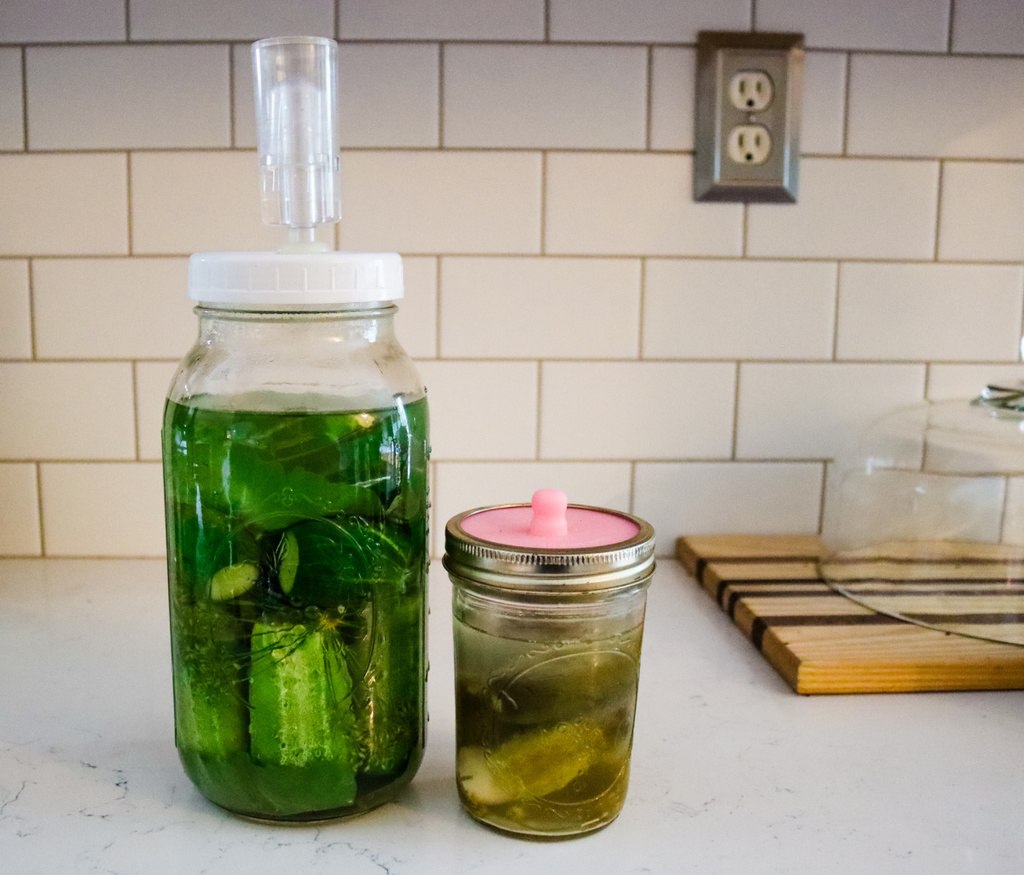Pickles, a beloved culinary staple, have tantalized taste buds for centuries. The process of lacto-fermentation, an age-old technique that relies on natural bacterial action, is the secret behind their irresistible sourness and crunch. But how long does this magical transformation take? Embark on a delectable journey as we unravel the mysteries of lacto-fermented pickles and uncover the optimal time frame for achieving pickle perfection.

Image: melissaknorris.com
Understanding Lacto-Fermentation: A Symphony of Microbes
Lacto-fermentation is a culinary artistry where the harmonious interplay of lactic acid bacteria, or LAB, transforms ordinary vegetables into delectable delicacies. These microscopic wizards consume the sugars naturally present in cucumbers, releasing lactic acid as a byproduct. This acidic environment inhibits the growth of spoilage-causing microorganisms while simultaneously bestowing pickles with their characteristic tangy flavor and extended shelf life.
Factors Influencing Fermentation Timeline
The duration of lacto-fermentation is not a fixed parameter but rather a delicate dance influenced by a symphony of factors, including:
-
Temperature: LAB thrive in warmth, multiplying rapidly between 65-75°F (18-24°C), leading to a quicker fermentation process.
-
Salinity: The amount of salt used directly impacts fermentation time. A higher salt concentration slows down the bacterial activity, extending the fermentation window.
-
Vegetable Type: Different vegetables possess varying sugar content, affecting the fermentation rate. Cucumbers, rich in natural sugars, ferment more swiftly than some other vegetables.
-
Atmospheric Conditions: Exposure to air can promote the growth of undesirable microorganisms, hindering the desired lacto-fermentation process.
A Timeline for Pickle Perfection
Armed with an understanding of the factors at play, let’s delve into the estimated time frame for lacto-fermenting pickles:
-
Two to three days at room temperature (65-75°F): Under these conditions, your pickles will develop an effervescent touch, signaling the onset of fermentation.
-
Two weeks at room temperature: This extended period allows the pickles to fully ferment, resulting in a mellower acidity level.
-
One month at room temperature: For those who prefer a more assertive tartness, an additional week of fermentation at room temperature deepens the sour notes.
-
Refrigeration: After achieving your desired level of sourness, transfer your pickles to the refrigerator. This cool environment halts the fermentation process, preserving the pickles’ tangy goodness.

Image: www.theorganicplace.com.au
Tips for Perfectly Fermented Pickles
-
Use fresh, crisp cucumbers, free from blemishes, for optimal fermentation.
-
Ensure proper sanitization of all equipment and utensils to prevent contamination.
-
Control the salt concentration to regulate the fermentation rate and flavor intensity.
-
Submerge the pickles completely in the brine to prevent exposure to air, a potential source of spoilage.
-
Monitor the fermentation progress periodically by observing the changes in aroma, bubbles, and acidity level.
How Long To Lacto Ferment Pickles
Conclusion
Lacto-fermenting pickles is a culinary adventure where patience and understanding converge. Embracing the science behind the process empowers you to achieve pickle perfection. From the nimble dance of LAB to the nuanced interplay of temperature and salt, every aspect of lacto-fermentation contributes to the ultimate flavor and quality of your homemade pickles. So, seize the opportunity to experiment, savor the journey, and delight in the tangy triumph of perfectly fermented pickles.